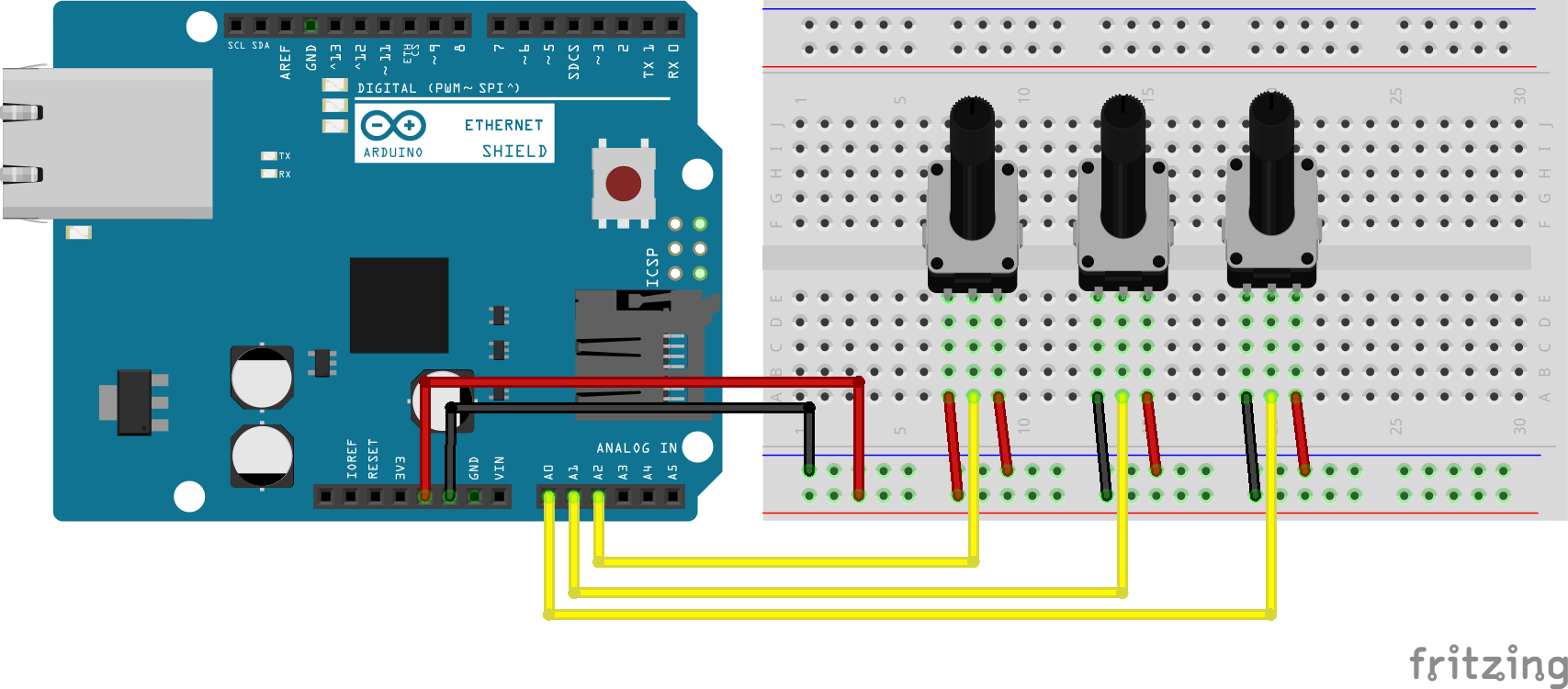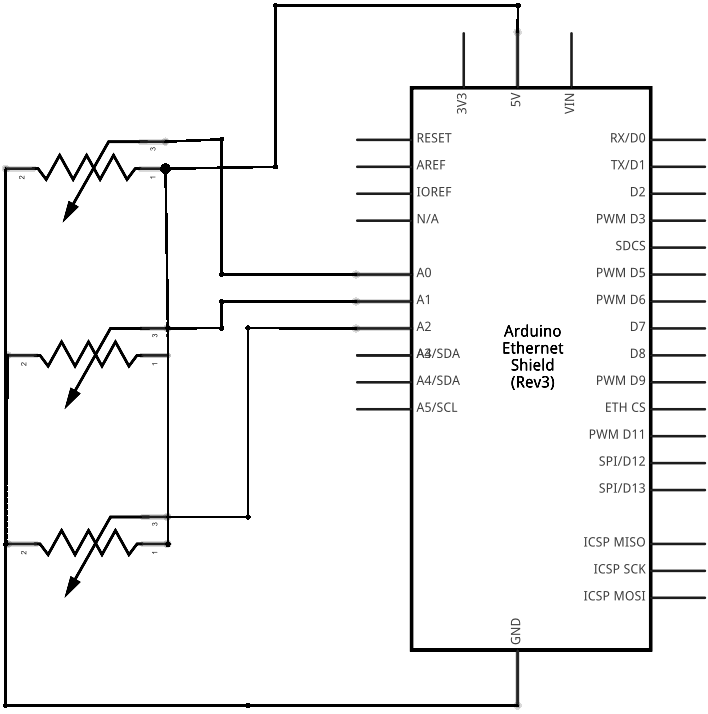Using the SD library to log data
This example shows how to use the SD card Library to log data from three analog sensors to a SD card. Please click here for more information on the SD library.
Hardware Required
- Arduino or Genuino board
- Ethernet Shield (or other board with an SD slot)
- 3 10k ohm potentiometers
- hook-up wires
- breadboard
- Formatted SD card
Circuit
image developed using Fritzing. For more circuit examples, see the Fritzing project page
The Arduino or Genuino board has to be connected to the Ethernet Shield. The three potentiometers may be substituted with other analog sensors, to be wired according to their interfacing techniques.
Schematics
image developed using Fritzing. For more circuit examples, see the Fritzing project page
Code
The code below is configured for use with an Ethernet shield, which has an onboard SD slot. In the setup(), call SD.begin(), naming pin 4 as the CS pin. This pin varies depending on the make of shield or board.
In the loop(), a String is created to hold the information from three analog sensors. The code iterates through the sensors, adding their data to the string.
Next, the file on the SD card is opened by calling SD.open(). Once available, the data is written to the card when dataFile.println() is used. The file must be closed with dataFile.close() to save the information.
SD card datalogger
This example shows how to log data from three analog sensors
to an SD card using the SD library.
The circuit:
* analog sensors on analog ins 0, 1, and 2
* SD card attached to SPI bus as follows:
** MOSI - pin 11
** MISO - pin 12
** CLK - pin 13
** CS - pin 4 (for MKRZero SD: SDCARD_SS_PIN)
created 24 Nov 2010
modified 9 Apr 2012
by Tom Igoe
This example code is in the public domain.
*/
#include <SPI.h>
#include <SD.h>
const int chipSelect = 4;
void setup() {
// Open serial communications and wait for port to open:
Serial.begin(9600);
while (!Serial) {
; // wait for serial port to connect. Needed for native USB port only
}
Serial.print("Initializing SD card...");
// see if the card is present and can be initialized:
if (!SD.begin(chipSelect)) {
Serial.println("Card failed, or not present");
// don't do anything more:
while (1);
}
Serial.println("card initialized.");
}
void loop() {
// make a string for assembling the data to log:
String dataString = "";
// read three sensors and append to the string:
for (int analogPin = 0; analogPin < 3; analogPin++) {
int sensor = analogRead(analogPin);
dataString += String(sensor);
if (analogPin < 2) {
dataString += ",";
}
}
// open the file. note that only one file can be open at a time,
// so you have to close this one before opening another.
File dataFile = SD.open("datalog.txt", FILE_WRITE);
// if the file is available, write to it:
if (dataFile) {
dataFile.println(dataString);
dataFile.close();
// print to the serial port too:
Serial.println(dataString);
}
// if the file isn't open, pop up an error:
else {
Serial.println("error opening datalog.txt");
}
}
See Also
- SD library - Your reference for the SD Card library.
- Notes on using SD cards – What you need to know when you use SD cards
- CardInfo - Get info about your SD card.
- DumpFile - How to read a file from the SD card.
- Files - How to create and destroy an SD card file.
- Listfiles - How print out the files in a directory on a SD card.
- ReadWrite - How to read and write data to and from an SD card.
Last revision 2015/08/17 by SM


